
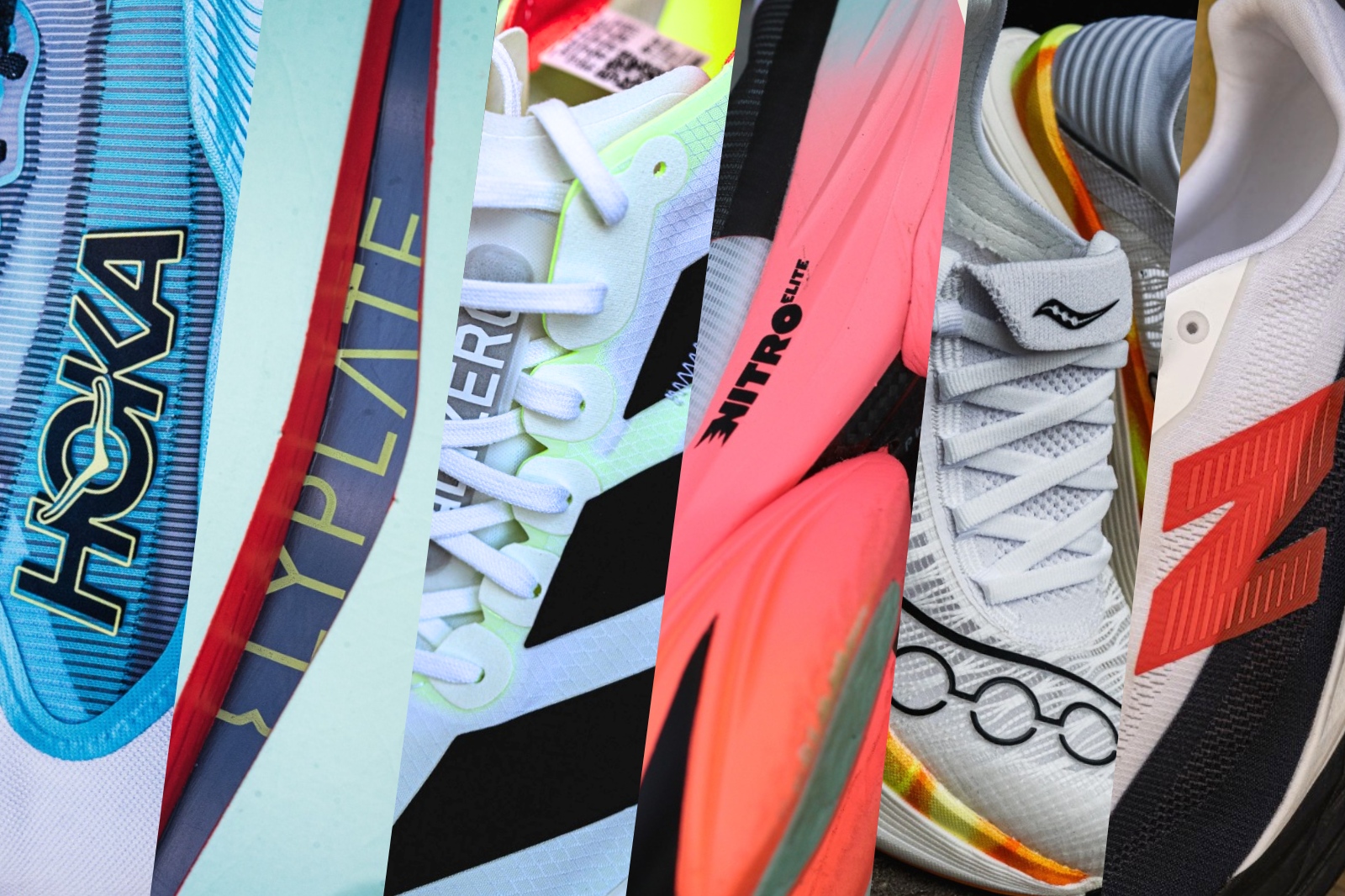
We independently review everything we recommend. When you buy through our links, we may earn a commission.
Our picks for the best race day running shoes
By logging fast runs and races in every shoe
$190-$300
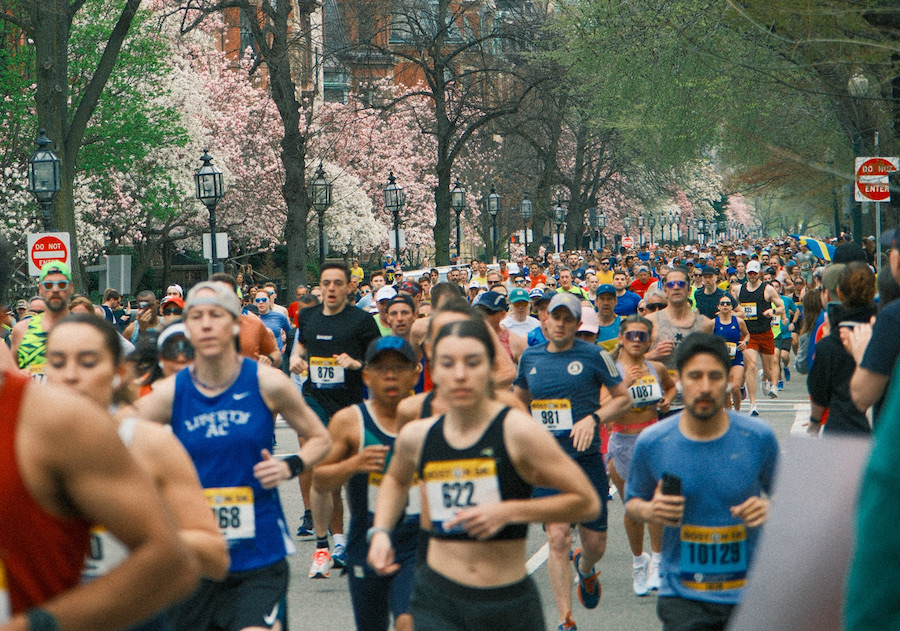
If you’re reading this, you’re far enough in your running journey that you love the feeling of going fast. Maybe that means a four-minute mile, or maybe that means a four-hour marathon. Either way – racing is a part of your running routine.
We know the feeling. Between the three members of our core road running team here at Believe in the Run, we’ve run close to 100 marathons over the past 15 years, with dozens of other races ranging from one mile to the half marathon (and the occasional 50K). Throw in workouts during those training blocks and we have quite the history of going fast in everything from the low-slung Saucony Kinvara 1 to the current generation of high-stack, lightweight super shoes.
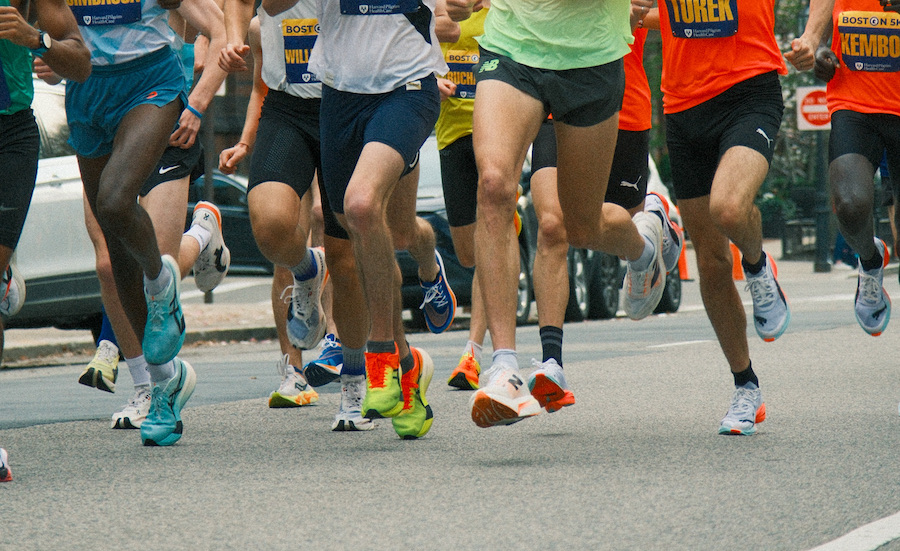
Fast shoes = fast races
Boy, how things have changed over that time. One thing is for sure – we are living in the golden age of running shoes. Since the Nike Vaporfly 4% first broke the mold in 2017, almost everyone has caught up in technologies, materials, and performance. Translation: there are a lot of fantastic race day shoes available right now. So many, it can sometimes feel overwhelming trying to figure out which one is best for you.
Enter Believe in the Run, to help you with your decision. The following list are our personal favorites. Some of them have netted us a PR time on race day, while others keep us comfortable over any distance. Some are meant to fly as fast as possible over shorter distances, while others offer versatility at any speed. What we’re saying is there’s something here for anyone, no matter your running style, speed, or preference.
Here’s to running, and to racing, and to finding your personal best on race day, however you define it.
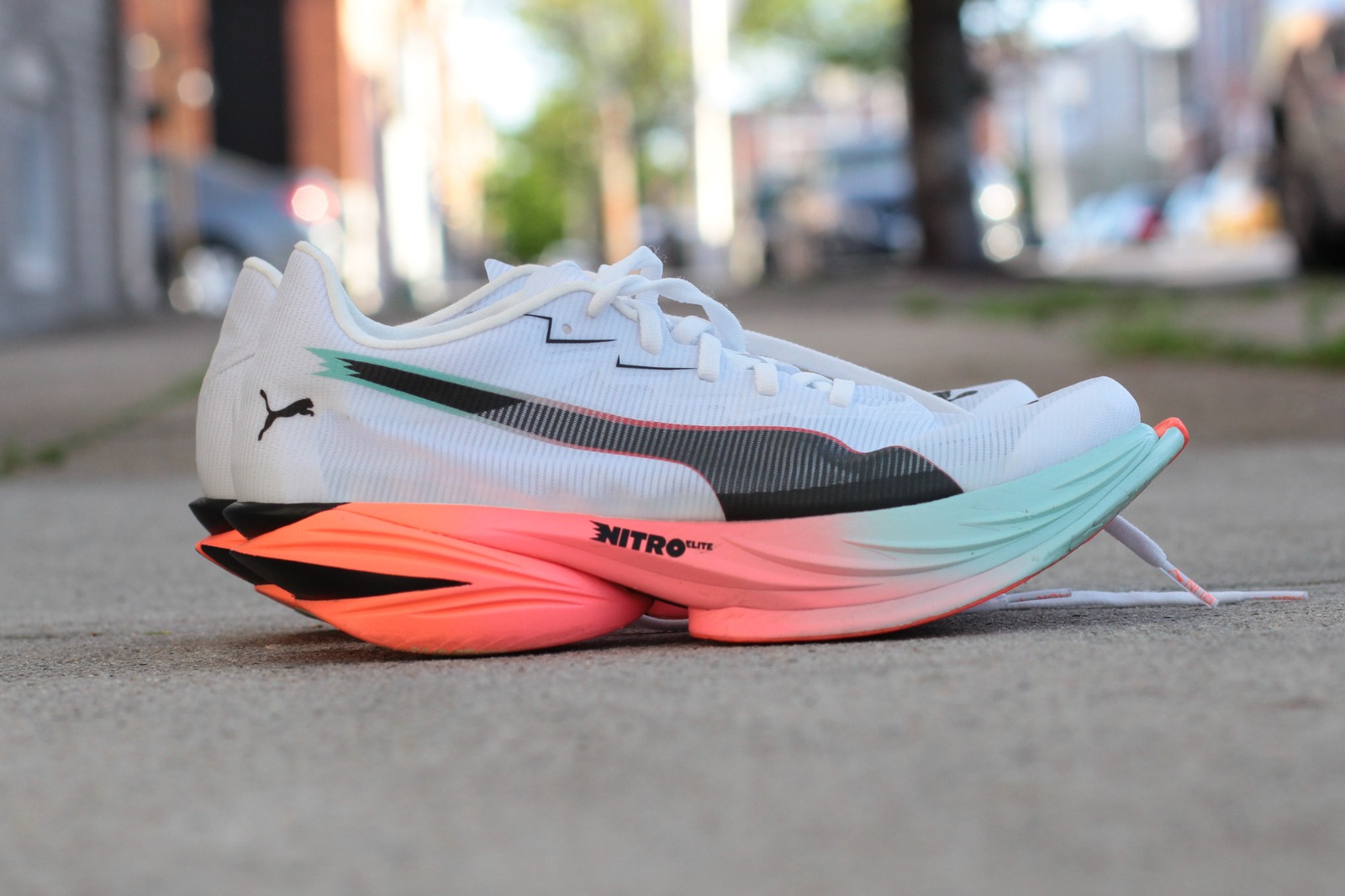
6 oz. (170 g) for a US M8, 5.2 oz. (147g) for a US W7.5
The fastest race day, up to the marathon
Aliphatic ETPU midsole, restructured carbon fiber PWRPlate, Pumagrip outsole, lightweight mesh upper
Talk about going full-on wildcat mode. Puma is out for blood in 2025, and they proved it by showing up to Boston and London and creating all the buzz on the street. Most of that was courtesy of the Fast-R 3, a ridiculously lightweight carbon-plated race day shoe with an aliphatic TPU midsole that was shown to have a 3.5% improvement over the Nike Alphafly in lab testing. That’s a lot.
One thing is for sure– this is a different Fast-R than we’ve ever seen. And it puts Puma squarely in the top tier of marathon race day shoes. It’s aggressive, it’s snappy, it’s fast as hell, and that extra leverage in the toe does something, even if we’re not sure exactly what. The outsole grip is the best in the world and the upper is incredibly lightweight and breathable.
There’s a reason Puma was willing to go all-in on the third version of the Fast-R, and that’s because it’s the Fast-EST.
Drawbacks? We’ve seen plenty of bloody toe pics in this shoe, so make sure you size properly. Also, at $300 it’s the most expensive race day shoe on the market that isn’t the Adidas Pro Evo 2.
Shop The Shoe - Men Shop The Shoe - Women
7.1 oz. (200 g) for a US M9, 6 oz. (172 g) for a USW7.5
Any distance up to the marathon
Bouncier Lightstrike Pro midsole, Evo Pro EnergyRods placement and geometry, redesigned woven mesh upper and lacing system, all-new outsole design, Lightlock support band
Most brands put out a new version of a shoe each year, attempting to justify a new purchase with minor updates. Adidas eschewed the traditional timeline, spending nearly three years developing the follow-up to the fairly competitive Adios Pro 3. The Adios Pro 4 went through six cycles of development, twice the standard amount, with athletes testing it from the roads of Germany to the red dirt of Kenya.
It was worth the wait. Everything was overhauled in this shoe, from the bouncy formulation of Lightstrike Pro in the midsole to the Pro Evo EnergyRods placement. The new woven mesh upper solves most of the problems we had with the stiff material used in the Adios Pro 3. This one may be the best upper in a race day shoe right now.
It’s light and fast and if you need any more proof – I personally nabbed a PR in the shoe at the Berlin Marathon this past fall.
Drawbacks? The sizing can be a bit off, so if it feels snug in the toe box, go a half size up. We didn’t, and lost some toenails in Berlin. Also, the EnergyRods can cause some issues for some runners, depending on where they hit in your footstrike.
Shop The Shoe - Men Shop The Shoe - Women
7 oz. (199 g) for a US M9, 6.2 oz. (176 g) for a US W7.5
Marathon distance
All-new incrediRun TPEE midsole, TPE yarn upper, PWRTRAC outsole
One of the most difficult things to do with super foams is to find a balance between squishy and bouncy. Too soft and you don’t get enough energy return. Too firm and it can feel dense and flat. Saucony managed to strike the perfect balance in the Endorphin Elite 2 with its IncrediRun midsole, a slab of TPEE foam that is squishy during initial landing but offers an incredible bounce on the comeback.
It’s also versatile, a shoe that excels for everything from 5K speeds to marathon and even easier running. The TPE yarn knit upper is unique in its design and structure, offering a solid fit while bringing breathability throughout. Plus, it just looks good. For Thomas, it’s on his podium of race day shoes. It just may be your top pick as well.
Drawbacks? With a high stack of softer foam comes the inevitable instability. Couple that with a lack of structure around the heel and you want to make sure you’re careful with the ankles.
Shop The Shoe - Men Shop The Shoe - Women
5.1 oz. (145 g) for a US M10/US W11.5
5K and under, 10K at most
Lower ZoomX midsole, carbon fiber Flyplate, built on a track spike last
The lone shoe that isn’t a marathon racer on this list, the Streakfly 2 may be the purest speed rush out of them all.
Nike flexed their fast-twitch fibers in this one, as if to prove that, yes– they still own race day. While most brands flip flop between keeping people both happy and comfortable in a race day shoe, Nike said “nah,” giving the minimum treatment to the maximum performance.
That means starting with a track spike last and trimming back the midsole stack to 27 mm in the heel, throwing in the same Flyplate from the Vaporfly 3, slimming down the midsole geometry in the midfoot and the heel, and saying “let ‘er rip.” Rip it does, with an ultra aggressive lever that keeps you on your toes the entire time. It’s like an invisible slipper that makes you want to crash and burn come race day.
If you’re looking for a shoe that goes full scorched earth – this is the one.
Drawbacks? As with the Vaporfly, there’s a little bit of heel lift, but since you’re on your toes most of the time, it’s not as noticeable. If you heel strike even at faster paces, then stay away from this one unless you enjoy destroying both yourself and the shoe. Also, $190 is a big ask for a very specific type of shoe, but also not if it’s one of the best ever.
Shop The Shoe - Men Shop The Shoe - Women
8.1 oz. (229 g) for a US M10, 6.8 oz. (193 g) for a US W8
Having a freakin’ blast while running any distance
Dual layer PEBA midsole, winged carbon fiber plate, speed-centric MetaRocker, SCF TPEE Sockliner
We said the first version of this shoe was quite possibly the most fun we’ve ever had running in a shoe. We were right, until we weren’t. Because that crown now belongs to this year’s update in the Cielo X1 2.0.
The bounce of the dual layer PEBA midsole, the aggressive rocker that keeps the turnover quick and effortless, the excellent fitting upper– all of those things combine to create a shoe that is truly unlike any other out there. We felt that the first version was too heavy to be an actual race day shoe, and while this version isn’t the most featherweight option out there, it’s light enough to hit all your paces in workouts or race day. The winged plate even offers a touch of stability.
Hoka boldly went there and we’re lucky to be along for the ride.
Drawbacks? The aggressive medial cutout in the midsole is certainly a choice. Those with stability issues may want to stay away, but once the shoe is moving it doesn’t seem to matter as much. Also, it’s not a great walking shoe, so be careful getting to the start line.
Shop The Shoe - Men Shop The Shoe - Women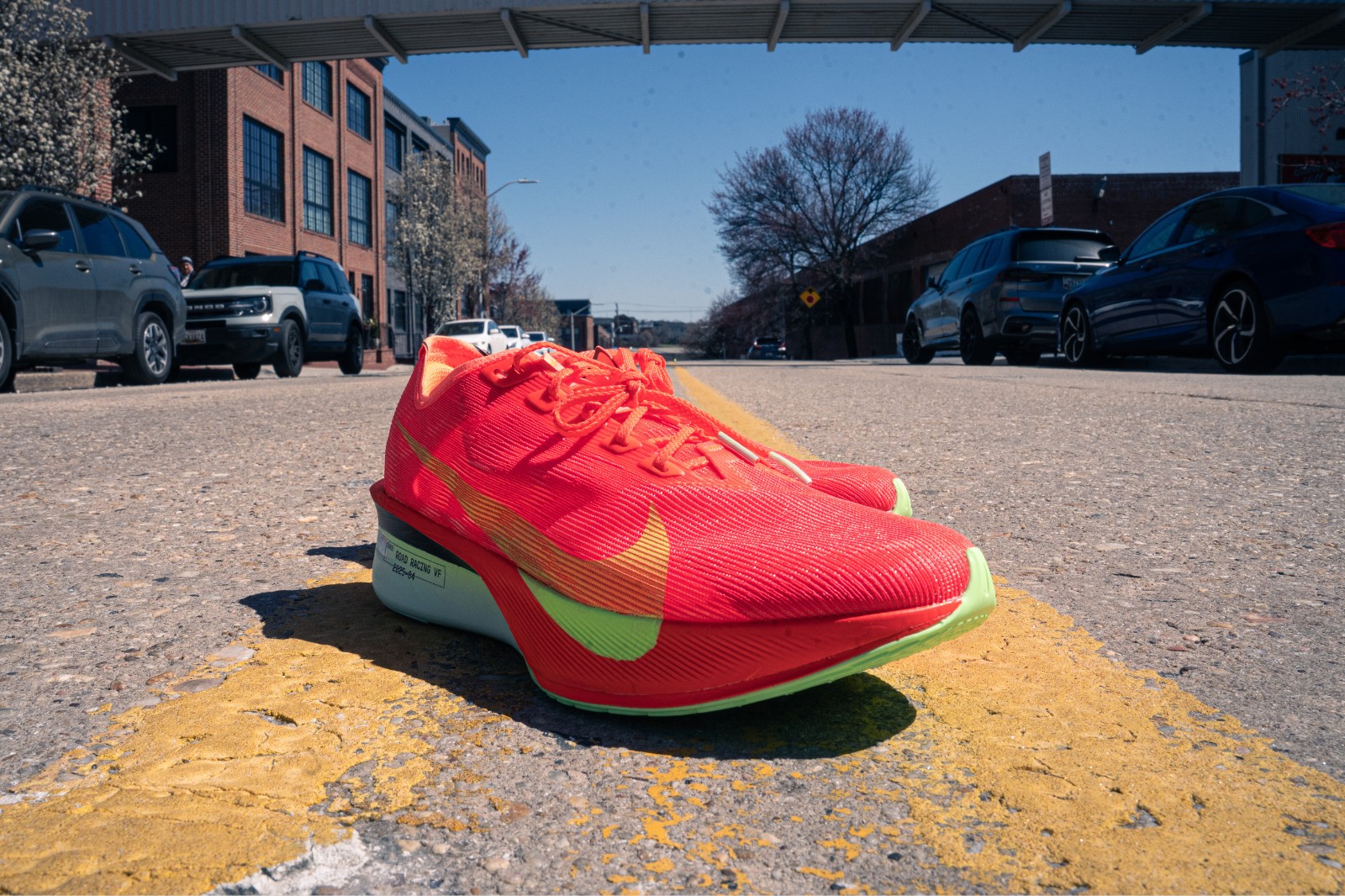
6.4 oz. (184 g) for a US M10.5 / 4.9 oz. (139 g) for a US W7.5
Half marathon or marathon
ZoomX midsole, full-length carbon fiber Flyplate, lightweight mesh upper
The shoe that started it all continues to impress us, 8 years after cannonballing the shallow stack end of the race day pool. The newest version of this iconic marathon shoe is the lightest one yet, coming in at just a touch over 6 ounces. For something with a barely legal stack of midsole foam, carbon fiber Flyplate, and more than capable outsole rubber, that’s an achievement in itself.
None of that matters if the performance suffers, but the underfoot sensation in this version of the Vaporfly is the best one to date. Smooth and effortless, this thing is fast and sure, highlighting all the best parts of Nike tech while cutting out the fat.
Drawbacks? While Nike uses heel pillows in an attempt to keep the foot secure, the rigid Flyplate lends to a bit of heel lift. Speaking of heel, if you’re a heel striker, move on to something else – as with the Streakfly, there’s not much to support you on landing and what foam exists will give a super unstable sensation.
Shop The Shoe - Men Shop The Shoe - Women
7.7 oz. (218 g) for a US M10.5, 6.1 oz. (174 g) for a US W8
Marathoners who love the bounce and high arch support
Atomknit 3.0 upper, widened carbon fiber plate, ZoomX midsole, Air Zoom Units, integrated eye stays, upgraded Fast Shot outsole rubber
When it comes to running in Nike for the marathon, you’re either a Vaporfly or Alphafly person, but rarely both. And if you love the Alphafly, you really love the Alphafly.
Meaghan, our lead women’s road reviewer, is the fastest person on our team, with a 2:45 marathon to her name. This is her go-to pick for race day, every time. So that should tell you something.
However, we’ll tell you the rest, which is this: We were huge fans of the first Alphafly (revolutionary), didn’t love the Alphafly 2 (clunky and heavy), and think that the Alphafly 3 is the best version of them all. It has improvements in all the right places, including the latest version of Atomknit for the upper, a much smoother transition thanks to less material around the Air Zoom Units, all while shaving an ounce off the previous version and giving back all the bounce you could want when coming through the stride.
There’s a lot going on, but it all has a place and purpose, which is to get you across the finish line in the fastest way possible, without destroying your legs in the process.
Drawbacks? Despite the fun factor, it can feel a little mechanical at times. And if you’re not a fan of high arch support in the midfoot, then you should probably choose something else.
Shop The Shoe - Men Shop The Shoe - Women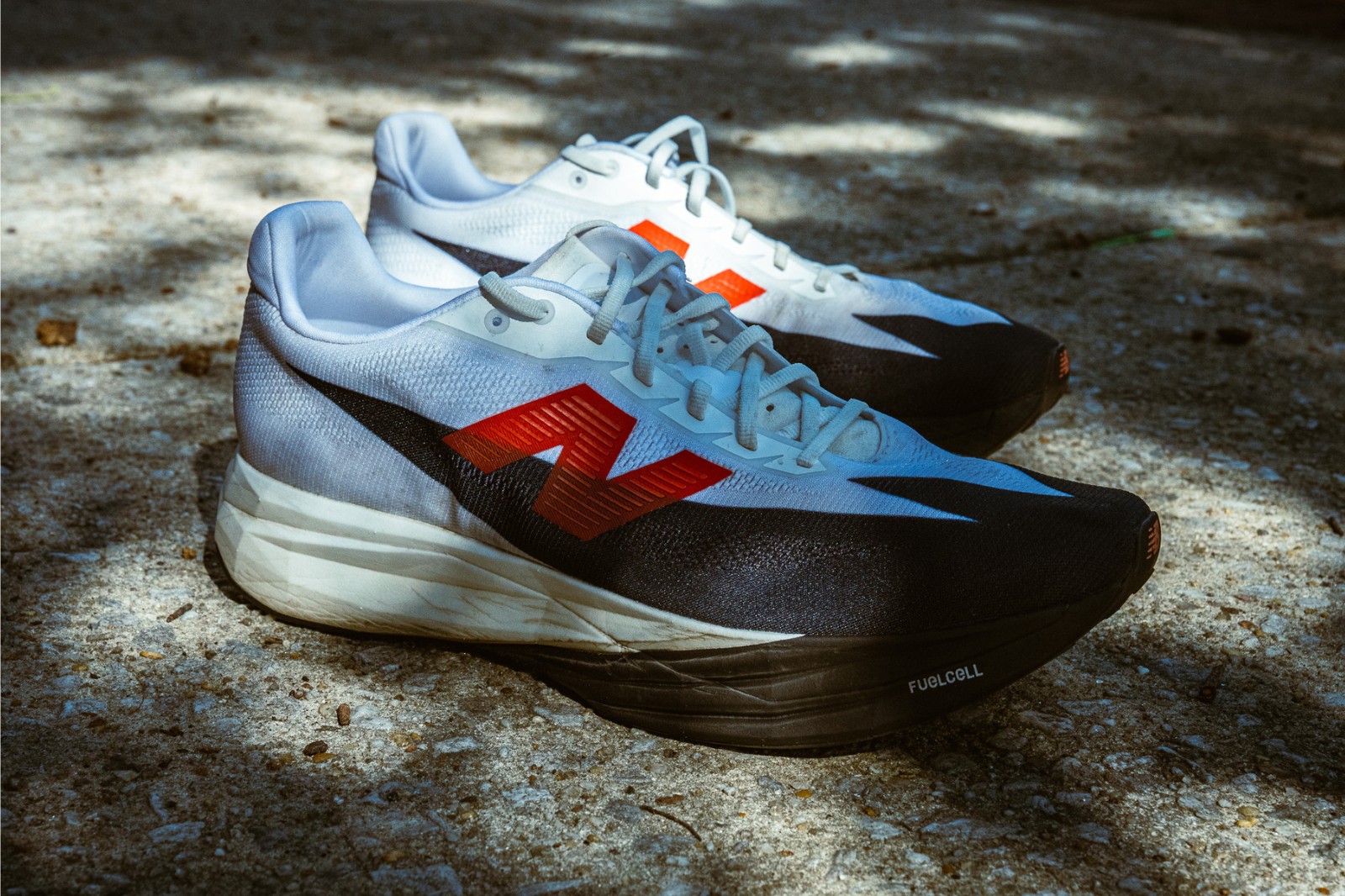
7.9 oz. (224 g) for a US M10.5 / 5.8 oz. (165 g) for a US W7
Marathon
Stiffer forefoot carbon fiber plate, 100% PEBA FuelCell midsole, updated outsole rubber, updated rocker geometry, single-layer mesh upper
Past versions of this shoe felt like they were always the second tier of race day shoes. We’re not willing to put this one on the podium just yet, but we will say that it’s sharpened its edges to become more of a true racer.
A redesigned rocker geometry and stiffer carbon fiber plate give this a slightly firmer feel than the last one, which was just a touch too soft. The FuelCell formulation remains largely unchanged, still offering a bouncy squish underfoot, but the whole package just feels faster.
In short, you still get the comfort to keep your legs feeling fresh over 26+ miles, but without sacrificing some of the performance aspects you want when going your fastest out on the course.
Available August 7, 2025.
Drawbacks? At its current weight, it’s still one of the heavier race day shoes out there, weighing as much as the Alphafly but without any of the bells and whistles.
Shop The Shoe - Men Shop The Shoe - Women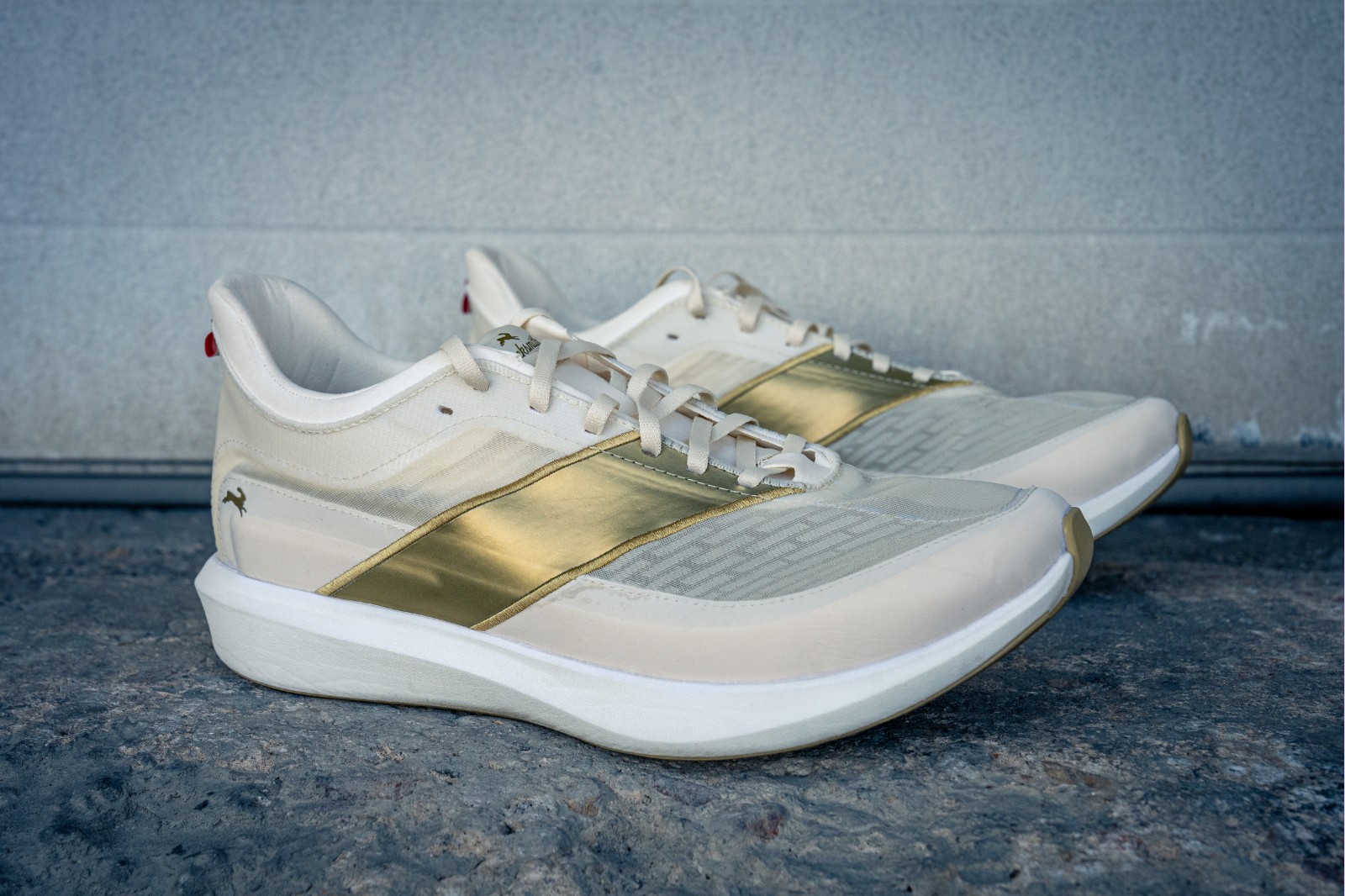
7.7 oz. (218 g) for a US M9 / 6.6 oz. (187 g) for a US W7.5
Race day and tempo runs
Drop-in ATPU midsole, carbon fiber plate, PEBAX midsole chassis
The Eliot Racer is a shoe that has been in the making for years and one that we weren’t sure was ever going to come to market. Suffice it to say, our expectations were low. And then we ran in it. Whatever they did, they did it right. This is a fantastic shoe.
The midsole is made of Aliphatic TPU – the same foam used in the Puma Fast-R 3. It’s incredibly bouncy and resilient and strikes a perfect balance of comfort and performance on the run. It just feels great, mile after mile, for any distance and any pace.
For that reason, it’s one of our most favorite do-it-all shoes. You can use this for tempo runs or long workouts and then transition it to race day. Plus, with the gold Tracksmith sash on the side, you can look like run royalty whenever you lace them up.
Drawbacks? It’s a pretty squeaky shoe, just a heads up. It also lacks some of the snappiness of the aggressive carbon plated racers on this list, but for slower marathon runners or first-timers, this may be one of the best out there.
Shop The Shoe - Men Shop The Shoe - Women
7.4 oz. (211 g) for a US M10.5
Race day up to the marathon
Essentially an updated midsole with 100% PEBA DNA Gold midsole, same incredible upper found throughout the Hyperion line
This is the one shoe on here that I think is criminally overlooked. Mainly, that’s because the first three versions of this shoe kinda (really) sucked. This is the first version that has used a PEBA midsole, as well as the star-shaped Arris carbon fiber plate. The upper is absolutely incredible, providing both optimal breathability and a near-perfect wrap around the foot.
It’s been awhile since I’ve run in this shoe, but I took it out for an 8-mile run on Global Running Day. In the middle, I decided to throw down a fast lap on a crowded course on an 80F-degree evening. The shoe responded perfectly, offering a quick turnover with just the right amount of cushion. I pulled out a 6:20 mile, one of my fastest non-race miles in forever.
It made me think: maybe this shoe is way better than I had originally thought. At
Drawbacks? Well, it’s currently out of stock, likely since the Hyperion Elite 5 is on the way. That shoe will also use a DNA Gold midsole, so here’s hoping for the best.
Shop The Shoe - Unisex

7.8 oz. (221 g) for a US M10.5
Half marathon, maybe marathon
Dropped-in top midsole construction, Helion HF midsole, one-piece, semi-transparent mesh upper
While we aren’t the biggest fans of On when it comes to traditional running shoes (though they’ve gotten significantly better in the past couple years), we have to say that they’re onto something with their race day shoes. We really enjoyed the Cloudboom Echo 3 for distances up to a half marathon, the Cloudboom Lightspray is super innovative, and this shoe – the Cloudboom Strike – is fast and fun.
The midsole construction is unique, featuring a removable/drop-in top layer of Helion HF that sits on top of a carbon fiber plate embedded into the bottom layer of foam. The single layer mesh upper is light and breathable (though a bit difficult to dial in).
Overall it’s just a very solid race day shoe, and probably the best overall shoe in the On family.
Drawbacks? The sizing was crazy on this one, sometimes too big by an entire size, especially on the margins of sizes. It may have been fixed since we tested it, but just a heads up.
Shop The Shoe - Men Shop The Shoe - Women
8.1 oz. (229 g) for a US M10/UK 9
Marathons (especially first time) or uptempo workouts
Anima PBX midsole, carbon fiber plate, upgraded Matryx upper with carbon yarns
Slowly but surely, Diadora has been making a name for themselves in the already saturated running shoe market. Over the past half decade, they’ve been very deliberate in releasing a core set of shoes that combine outstanding design and rock solid performance. Throw in some premium materials and you get the Gara Carbon 2.
While this isn’t one of the shoes made in their Italian factory, the Gara Carbon does feature a French-made Matryx upper, one of the more durable uppers on the market that utilizes synthetic materials woven with carbon yarns.
The 100% PEBA midsole is bouncy and comfortable; combined with the carbon fiber plate, the whole thing settles in nicely to your prescribed pace. While it’s not the snappiest or most aggressive ride on the market, it does manage to fill a gap that some of the more high-caliber shoes have skipped over – that of a race day shoe for everyone.
So if this is your first marathon or you’re looking for something that isn’t too unstable but will allow you to harness the speed you’ve worked for, then the Gara Carbon 2 is an excellent choice for your goal race.
Drawbacks? It costs more than the Nike Alphafly and the same as the Puma Fast-R 3. That’s a lot to ask of someone who may be trying your brand for the first time. That said, you won’t be disappointed if you do make the jump.
Shop The Shoe - UnisexHave something to say? Leave a Comment

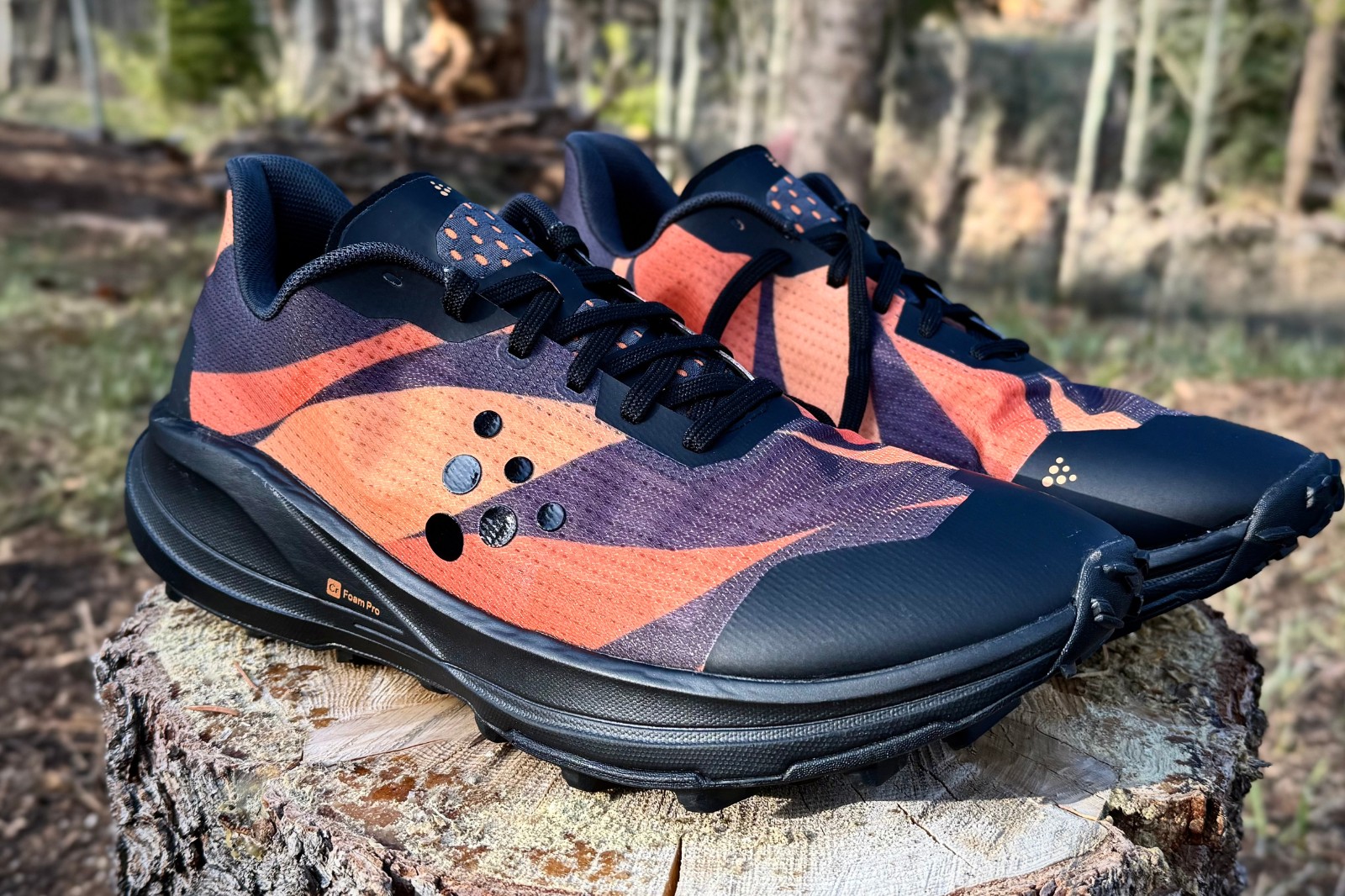
Solid list but where are the Asics? Metaspeed Edge/Paris.
They’ll be on here in like a week, waiting to get our miles in the Tokyo
I have a pair of the Cielo (on your recommendation). I love the shoe – and I consider myself an average runner. For me, it all about the pounding on the ground, and this shoe saves me a lot of pain. But, it seems to wear out fast, and either I got a bum pair or it’s the shoe – but after 3 races the sole is practically gone.
Would be nice to add to your reviews. – how a shoe holds up after to miles or so.
Last year, I bought three pairs of running shoes based on recommendations from BITR. I didn’t get on with the first two at all, but I love the last pair, the Asics Superblast 2.
I chose the AS2 based on the ‘Best Running Shoes for Heavy Runners’ list (https://believeintherun.com/shoe-reviews/best-running-shoes-for-heavy-runners/), but it hasn’t been updated since February.
As Chad says on that page: ‘When I first approached the Believe in the Run team about what I felt was a lack of online shoe reviews by bigger or heavier runners, I had hoped that I’d be able to help runners who found themselves in the same position I was: frustrated by a lack of representation in the online shoe review world.’
Everyone is different. In my case, I’m a 6ft 3 ex-rugby player weighing 100 kg, so it’s quite clear that the shoes that work for Robbie and Thomas aren’t going to work for me.
Hopefully it will have been updated by the end of the summer, when my race season starts and I’m looking for new trainers!